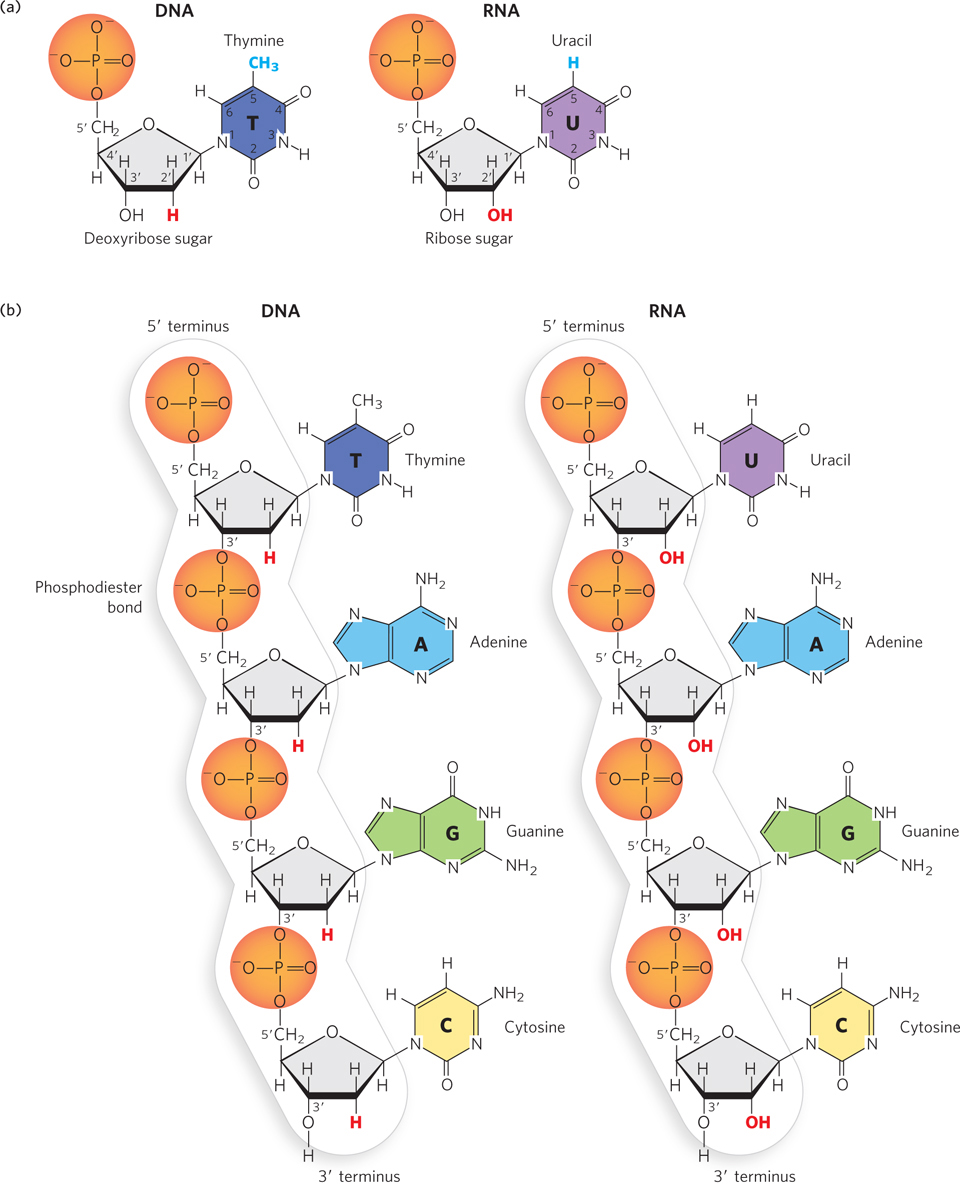
Chemical building blocks of DNA and RNA. (a) Chemical differences between the major nucleotides of DNA (left) and RNA (right). Atoms in the base ring are numbered sequentially, starting with the nitrogen that is bound to the sugar; carbon numbering in the sugar ring is denoted by a prime (′). DNA nucleotides contain the sugar deoxyribose, whereas RNA nucleotides contain ribose (light gray). The difference between these two sugars is a single hydroxyl group on the 2′carbon (red). In addition, DNA contains the base thymine, rather than the uracil found in RNA; these bases differ by a methyl group on carbon 5 of the base (red). (b) Segments of deoxyribonucleotide (DNA, left) and ribonucleotide (RNA, right) chains. Phosphodiester bonds connect the individual nucleotide units; the sugar–